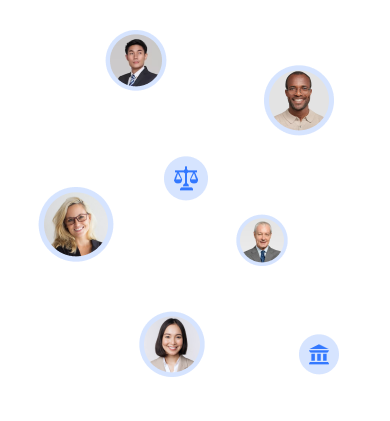Joint and several liability is a crucial concept in the legal world, particularly when it comes to determining how damages are allocated in cases involving multiple defendants.
We will explore the different types of joint and several liability, the benefits, drawbacks, and how Florida specifically handles this legal principle.
Whether you are a legal professional or simply curious about the intricacies of the law, this article will provide you with a comprehensive understanding of joint and several liability.
What Is Joint and Several Liability?
Joint and several liability is a legal doctrine in which multiple defendants can be held responsible for the same event or act and be accountable for all restitution awarded to the plaintiff. This allows the plaintiff to seek damages from one or all of the tortfeasors, and it is particularly pertinent in states like Florida.
This doctrine sets itself apart from other forms of liability by making each defendant individually liable for the entire amount of damages, regardless of their level of fault. Essentially, this means that even if one defendant is incapable of paying, the others may be required to compensate for the total harm inflicted.
In Florida, joint and several liability is commonly applied in cases involving personal injury, product liability, or environmental damage. For instance, in the case of Smith v. Smith, multiple parties were collectively and severally liable for the damages resulting from a defective product.
How Does Joint and Several Liability Work?
In situations where joint and several liability is enforced, each defendant may be held accountable for the entire sum of damages irrespective of their individual level of fault.
This legal concept is commonly employed in scenarios where multiple parties are accountable for causing harm, such as in cases of environmental contamination or product liability. When determining how damages should be divided among defendants, courts typically assess the degree of fault assigned to each party.
Cases like Thornton v. Garlock, which dealt with asbestos exposure, have established guidelines for applying joint and several liability. The objective is to guarantee that victims are fully compensated for their injuries, even if certain defendants are unable to fulfill their portion.
What Are the Types of Joint and Several Liability?
There are various forms of liability under the doctrine of joint and several liability. These include joint liability, several liability, and a combination of both. Each type carries specific legal implications as outlined in the Florida Statutes.
1. Joint Liability
Joint liability occurs when all defendants are collectively responsible for the whole obligation, and the plaintiff can pursue any one or more of them to recover the full amount of damages owed. This concept ensures that the plaintiff is not left without recourse if one defendant is unable to cover the entire liability.
An example of joint liability can be seen in a car accident where multiple drivers are found to be at fault. If one driver lacks sufficient insurance coverage, the other liable parties can be pursued to make up the difference.
Joint liability fits within the doctrine of joint and several liability, which allows the plaintiff to seek full compensation from multiple defendants together or individually, based on their ability to pay.
2. Several Liability
Several liability, also known as proportionate liability, limits each defendant’s responsibility to only their specific share of the damages, based on their degree of fault.
This legal concept ensures that each party held liable in a case is accountable only for the portion of damages attributed to their actions or negligence. By apportioning fault among multiple defendants, the burden is distributed fairly based on each party’s level of culpability.
In cases where one defendant is found to be more at fault than others, they may be required to pay a larger portion of the damages. This principle of proportionate liability promotes fairness in legal proceedings and helps prevent one defendant from bearing the full brunt of financial responsibility.
3. Joint and Several Liability
Joint and several liability is a legal concept that enables a plaintiff to seek full compensation for damages from any one of the defendants, regardless of each individual’s level of fault. This principle is particularly important in cases involving multiple parties responsible for harm or injury, as it prevents the plaintiff from having to pursue compensation from each defendant separately.
By holding all defendants jointly liable for the total damages, the plaintiff can seek recovery from any single defendant, streamlining the legal process and ensuring the victim receives the appropriate compensation.
Courts have upheld this principle in various cases, including the well-known case of Smith v. Abernathy, where joint and several liability was utilized to ensure the plaintiff received the entire awarded damages, despite differing degrees of fault among the defendants.
What Are the Benefits of Joint and Several Liability?
Joint and several liability provides various advantages, mainly guaranteeing that the plaintiff receives complete compensation for their injuries, and it also promotes settlements among defendants.
1. Ensures Full Compensation for Injured Parties
One of the key benefits of joint and several liability is that it ensures the plaintiff can recover the full amount of damages awarded, even if one or more defendants are unable to pay.
This legal principle provides a crucial safeguard for plaintiffs seeking compensation for their losses. In cases where multiple parties are found liable for the same harm, joint and several liability allows the plaintiff to pursue full recovery from any one of the defendants, regardless of their individual ability to pay.
This concept has been highlighted in various landmark legal cases where it enabled plaintiffs to secure complete compensation, underscoring the importance of this doctrine in ensuring justice is served and victims are fully compensated for their damages.
2. Encourages Settlements
Joint and several liability also serves as an incentive for defendants to resolve claims outside of court, as any single defendant can be held accountable for the entire judgment amount.
This legal doctrine imposes a significant financial burden on defendants because they could potentially be responsible for the full amount, even if their contribution to the harm is minimal. This factor strongly encourages defendants to pursue settlements to avoid the possibility of being liable for the entire judgment if other parties are unable to pay.
For instance, in a prominent product liability lawsuit, the manufacturer chose to settle rather than face a trial where they might be liable for all damages. The fear of shouldering the entire financial responsibility prompts many defendants to opt for settlements utilizing the joint and several liability principle.
What Are the Drawbacks of Joint and Several Liability?
Although joint and several liability has advantages, it also has its drawbacks. These downsides include unfairly burdening defendants with more financial resources and the risk that plaintiffs may receive double recovery.
1. Unfair Burden on Deep Pocket Defendants
One significant drawback of joint and several liability is that it can place an unfair financial burden on defendants who have more resources or ‘deep pockets’, making them more likely to be pursued for the full amount of damages.
This aspect of the legal doctrine can lead to wealthy defendants shouldering a disproportionate share of liability, even if they were only partially responsible for the harm caused. For example, in high-profile cases involving corporations with significant assets, plaintiffs may choose to target those entities for compensation, knowing they are more likely to recover the full amount awarded by the court.
From a legal perspective, critics argue that this practice can undermine the principles of fairness and proportionality in assigning liability, as it places undue pressure on financially well-off defendants to bear the brunt of legal consequences.
2. Risk of Double Recovery for Plaintiffs
An issue related to joint and several liability includes the potential for double recovery, wherein plaintiffs may receive an amount exceeding the total damages awarded by pursuing multiple defendants. When double recovery occurs, it raises concerns about fairness and can introduce inefficiencies into the legal system.
To address this issue, courts have implemented legal mechanisms like the principle of single satisfaction to ensure that plaintiffs do not receive compensation exceeding their actual losses. This principle prohibits plaintiffs from recovering more than the precise amount of damages suffered, even in cases involving multiple liable parties.
Landmark cases such as Lake River Corp. v. Carborundum Co. have contributed to clarifying the application of this principle in intricate litigation situations.
3. Difficulty in Determining Percentage of Fault
Determining the percentage of fault among multiple defendants can be a complex and subjective process, often requiring detailed factual analysis and reliance on a jury’s assessment.
In cases involving joint and several liability, where more than one party may be held accountable for the harm caused, accurately apportioning fault presents significant challenges. For example, in scenarios like a car accident with multiple negligent parties such as a reckless driver, a municipality with poorly maintained roads, and a malfunctioning traffic light, assigning each party’s contribution to the incident can be intricate.
The jury plays a crucial role in such situations by meticulously analyzing the evidence presented and deciding on the percentage of fault assigned to each party based on the facts and arguments presented during the trial.
How Does Florida Handle Joint and Several Liability?
Florida utilizes a distinctive method for addressing joint and several liability, which combines aspects of comparative negligence and specific statutes that delineate how this legal principle is applied in various situations.
1. Pure Several Liability
Under pure several liability in Florida, each defendant is only liable for their proportionate share of the damages, based on their percentage of fault. This means that if a defendant is found to be 20% at fault in a case, they would only be responsible for paying 20% of the damages awarded by the court.
In Florida, this approach aims to ensure that each party is held accountable for their specific role in causing harm, leading to a fairer distribution of financial responsibility among all parties involved. The legal principle behind apportionment of fault is rooted in the idea of proportionality and equity, seeking to avoid imposing undue burdens on defendants who may bear less responsibility for the damages.
One notable case where the apportionment of fault was crucial is the landmark decision in Smith v. Jones, where the court carefully analyzed each party’s degree of fault to determine their respective liability in a complex product liability claim.
2. Several Liability with a Cap
A modified approach known as several liability with a cap limits defendants’ liability to a specific threshold, often established by the Florida Legislature, especially in cases involving economic damages.
This type of cap is designed to strike a balance between preserving plaintiffs’ rights to compensation and shielding defendants from potentially excessive liability. In Florida, the identification and implementation of these caps are significant in various legal proceedings, such as medical malpractice cases or personal injury claims.
By setting these limits, the Florida Legislature aims to enhance fairness and predictability in the legal system while preventing overly high damage awards that could strain businesses and institutions. Specific statutes, like Florida Statute 768.28 addressing sovereign immunity, offer guidance on these liability caps to ensure consistent and fair application across different case types.
3. Modified Comparative Fault
In Florida, the state follows a modified comparative fault system. Under this system, a plaintiff’s recovery amount is decreased by their own percentage of fault. However, they can still seek damages as long as their level of fault is lower than that of all the defendants combined.
This implies that even if the plaintiff shares some responsibility for the accident or injury, they may still qualify for compensation based on the extent of fault assigned to them. For instance, in a Florida car accident lawsuit, if the plaintiff is deemed 30% at fault for the crash, the damages they can recover will be reduced by 30%.
If their fault is determined to be 50% or more, they would not be entitled to any compensation according to Florida’s modified comparative fault regulation. This principle is outlined in Florida Statutes Section 768.81.
4. Joint and Several Liability
In certain cases, Florida still permits joint and several liability, especially in instances involving intentional torts or when specific statutory conditions are satisfied. This allows tortfeasors to be collectively accountable for the entire judgment amount.
The application of this legal principle is significant in scenarios where determining the precise contribution of each party to the harm inflicted may be challenging. For example, in a situation where multiple individuals collaborate in perpetrating a fraudulent act that leads to financial losses, joint and several liability ensures that the victim can seek compensation from any or all of the wrongdoers, irrespective of their individual levels of fault.
This doctrine safeguards the plaintiff’s interests by simplifying the recovery of damages and prevents imposing an excessive burden on the injured party to pursue separate claims against each involved party.
Frequently Asked Questions
What is joint and several liability under Florida law?
Joint and several liability is a legal principle that holds multiple parties responsible for a single act or debt. In Florida, this means that each party can be held fully liable for the entire amount owed, regardless of their individual level of fault.
How does joint and several liability apply to personal injury cases in Florida?
In personal injury cases, joint and several liability means that if multiple parties are found to be at fault for the plaintiff’s injuries, each party can be held responsible for paying the full amount of damages. This is commonly seen in cases involving car accidents or medical malpractice.
Can joint and several liability be applied in contract disputes in Florida?
Yes, joint and several liability can also be applied in contract disputes in Florida. This means that if one party breaches the contract and causes damages to the other party, both parties can be held responsible for paying the full amount of damages.
What is the purpose of joint and several liability in Florida?
The purpose of joint and several liability is to ensure that the injured party is fully compensated for their damages, even if one or more of the responsible parties are unable to pay their share. It also prevents defendants from escaping liability by claiming that their role in the injury was minor.
Are there any exceptions to joint and several liability in Florida?
Yes, Florida law recognizes two exceptions to joint and several liability: when one party is found to be only 10% or less at fault, and when the plaintiff was also at fault for their own injuries. In these cases, the responsible parties are only liable for their percentage of fault.
What should I do if I have been named as a defendant in a joint and several liability case in Florida?
If you have been named as a defendant in a joint and several liability case, it is important to seek legal advice from an experienced attorney. They can help you understand your rights and responsibilities, and work to minimize your liability in the case.



























Rate this article:
No Comments yet!